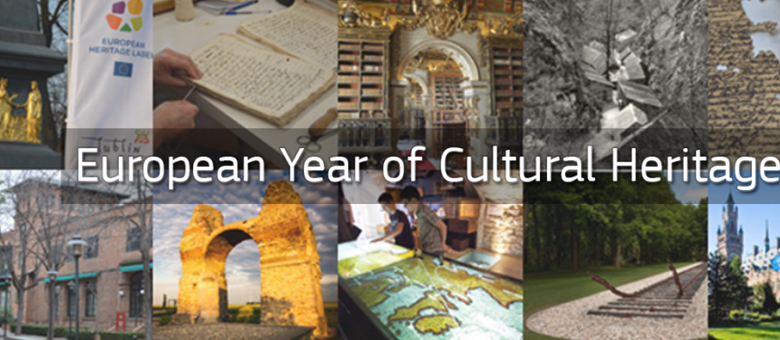
News

EU Commission proposes 2018 as the European Year of Cultural Heritage
By proposing today to the European Parliament and the Council to designate 2018 as the European Year of Cultural Heritage, the Commission seeks to highlight the role of Europe's cultural heritage in fostering a shared sense of history and identity.
Creative Europe·Dienstag, 30. August 2016
https://www.facebook.com/notes/creative-europe/eu-commission-proposes-to...
From archaeological sites to architecture, from medieval castles to folklore traditions and arts such as painting, literature, music and cinema, Europe's cultural heritage is at the very heart of Europeans’ common memory and identity. Its rich national, regional and local diversity is a unique catalyst of exchanges between people of all ages, social backgrounds, cultures and countries. At local level, for example, Europe's cultural heritage fosters social cohesion and integration through the regeneration of neglected areas, the creation of locally-rooted jobs and the promotion of a shared sense of community. This is also true at the European level, when visitors from Europe and beyond visit and learn more about the Abbey of Cluny in France, Aix-la-Chapelle, the Archive of the Crown of Aragón in Spain or the historic Gdańsk Shipyard in Poland, to give a few examples.
For these reasons and at a time when world cultural treasures are threatened or deliberately destroyed in conflict zones, the Commission considers that cultural heritage deserves a European Year in 2018.
European Commissioner for Education, Culture, Youth and Sport, Tibor Navracsics, said:
"Our cultural heritage is more than the memory of our past; it is the key to our future. A European Year of Cultural Heritage will be an opportunity to raise awareness of the social and economic importance of cultural heritage and to promote European excellence in the sector. I call on the European Parliament and Council to support our proposal and invite all stakeholders to help make this Year a success."
Cultural heritage plays a strong economic role. Over 300,000 people are directly employed in the European cultural heritage sector and many jobs are created in other sectors. Indirectly, 7.8 million European jobs are linked to cultural heritage, for example in tourism and building works in addition to ancillary services such as transport, interpretation services, maintenance and security. In France, for instance, in 2011, cultural heritage generated €8.1 billion from museums, the operation of historical sites and buildings and similar visitor attractions as well as library and archives activities. The Year of Cultural Heritage will be an occasion to highlight what the EU can do for conservation, digitisation, infrastructure, research and skills development, to name just a few areas supported by EU funding programmes such as Creative Europe. Events will be organised across Europe, as well as information, education and awareness-raising campaigns. The Year will seek answers to the challenges of decreasing public budgets in culture, declining participation in traditional cultural activities, environmental pressures on heritage sites, evolving value chains and digital transformation. In line with the recent Joint Communication "Towards an EU strategy for international cultural relations”, it will promote the preservation of cultural heritage as a key element of the EU’s external policies, searching for responses to the criminal destruction of cultural heritage in conflict zones and illegal trafficking of cultural artefacts.
For more information:
http://ec.europa.eu/culture/news/2016/0830-commission-proposal-cultural-...





